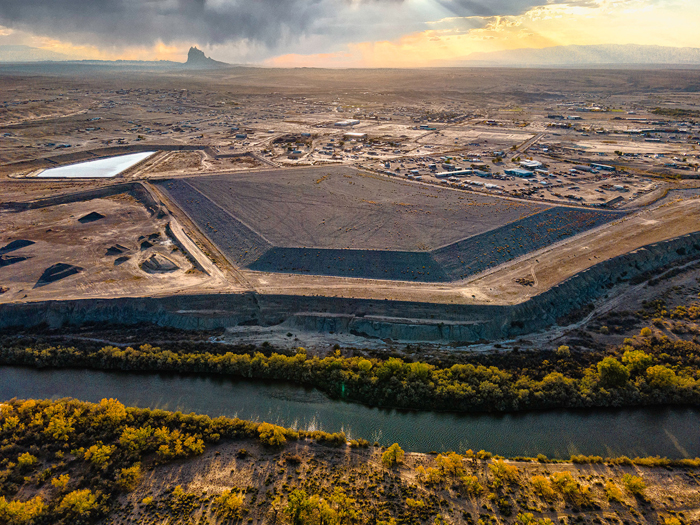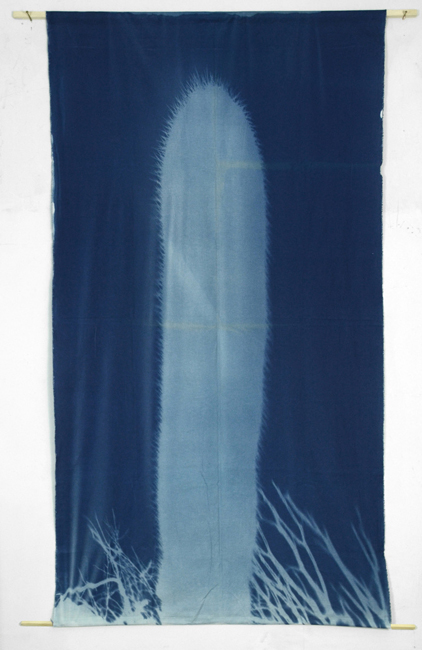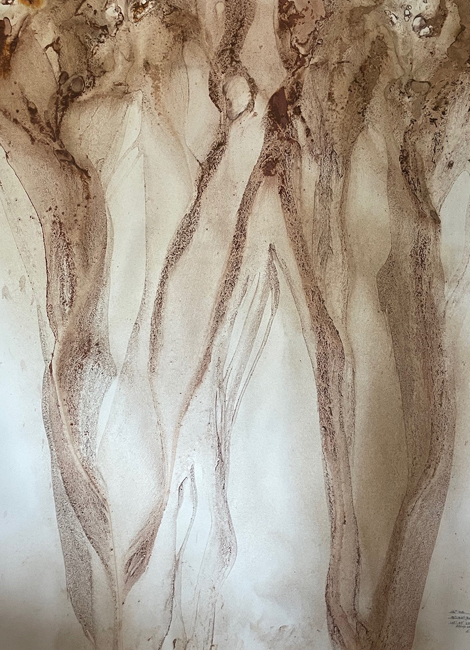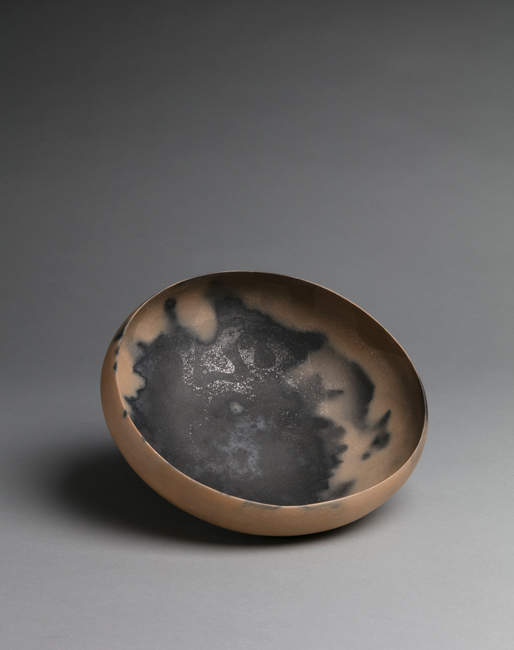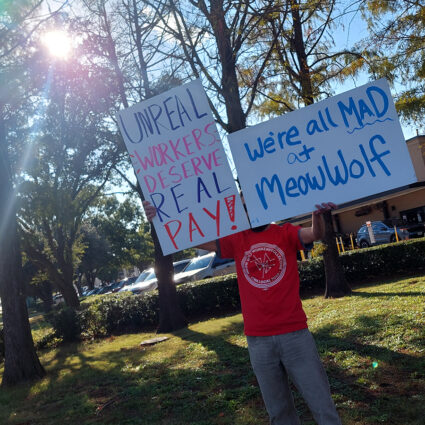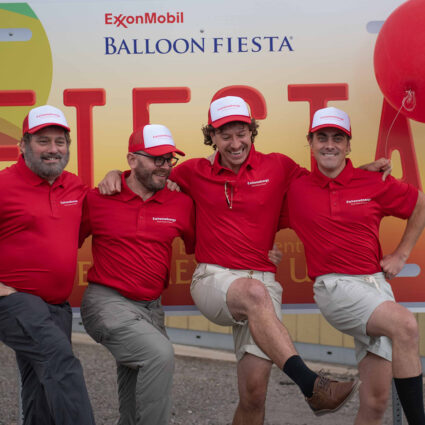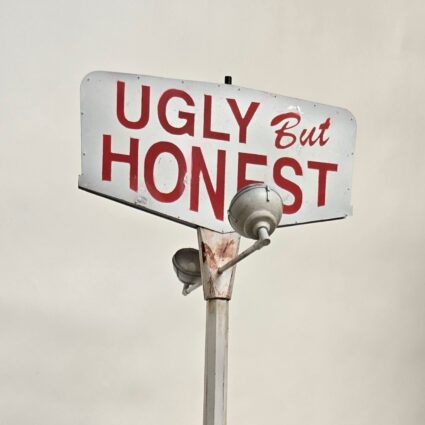At the Millicent Rogers Museum, Southwest Reflections: Between Shadows of the Land takes an interdisciplinary and intercultural approach to the place now known as New Mexico.
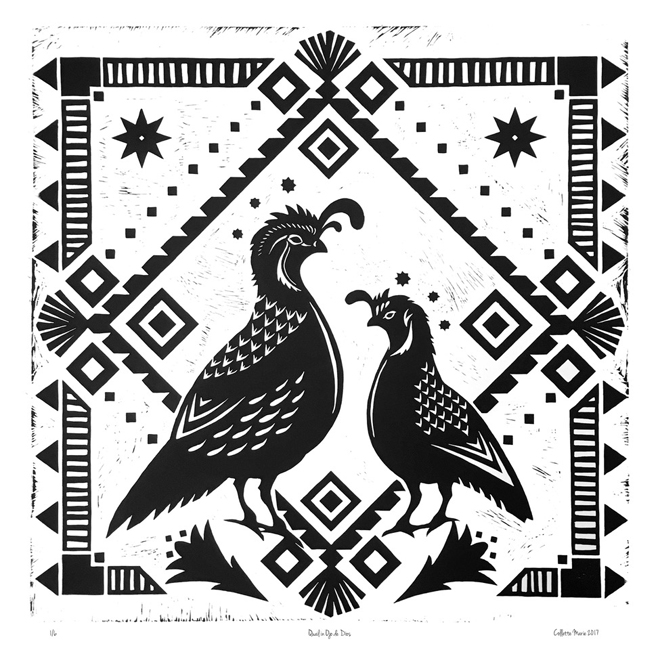
Southwest Reflections: Between Shadows of the Land
October 8, 2022–January 29, 2023
Millicent Rogers Museum, El Prado, New Mexico
At the Millicent Rogers Museum in El Prado, Southwest Reflections: Between Shadows of the Land takes an interdisciplinary and intercultural approach to the place now known as New Mexico. Moving between photography, cyanotypes, ceramics, weaving, video, printmaking, and painting, curator Michelle Lanteri says that the exhibition recognizes “artists as documentarians, and their processes as interventions.” These documentarians converge at the MRM from throughout the state, bringing together discussions about climate change and ecology, process and function, remediation, healing, and rebirth. In this, light is the subject—how do shadows, reflections, and movements shape artists’ experiences of place, community, and home? What emerges from the shadows?
As the visitor wanders through the maze-like layout of the historic hacienda and enters the gallery, they are welcomed into the museum’s “living room,” encountering Collette Marie’s large prints on paper and wood that speak to her Mestiza/Chicana identity, her lived experience, and her home in Las Cruces. With imagery evoking the animal life of the Chihuahuan Desert, Marie’s work is juxtaposed with Lorraine Gala Lewis’s (Laguna Pueblo/Hopi-Tewa/Taos Pueblo) ceramics. Lewis is known for drawing inspiration from ancestral black-on-white pottery from throughout the Southwest, and her pieces in this exhibition focus on depictions of animals. Together, Marie and Lewis set the stage for breaking down Western barriers between landscape, species, and self, and thinking more holistically about sense of and connection to place.
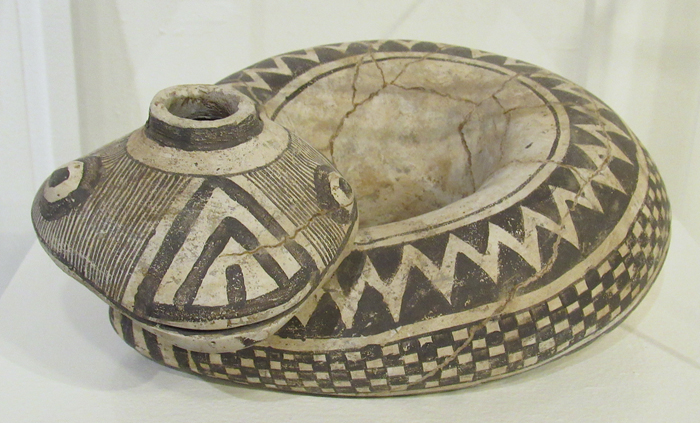
For Lanteri, Will Wilson (Diné) is the grounding force in the exhibition. A photographer, his work documents the impacts of uranium mining in Dinétah, bringing together the complex relationships between landscape, capitalism, and home, all while centering hózhó. How does one remediate these extractive processes, and how can visual storytelling aid in this undertaking? Keeping with this notion, in the second gallery, Pola Lopez’s acrylics on canvas bring the effects of the 2022 Mora fires into focus. In a particularly moving triptych, A Tree Once Lived Here; Even the Rocks Burned; Fire Sculpture – A Raven Totem (2022), Lopez creates a visual landscape through which one can understand the multilayered and multispecies impacts of climate change in the high desert. Here, the works of Matthew and Julie Chase-Daniel also bring these questions of change into the foreground—their Direct Exposure series captures “shadows cast by the structures that now exist along the [United States-Mexico] border, old and new.” The large-scale cyanotypes archive ecological moments in time—moments of place—through which the artists speak to extraction, permeance, and documentation.
These pieces are also put into conversation with the work of Dora Dillistone, who Lanteri sees as a “collaborator with the elements.” Dillistone’s monumental and visually striking pieces move between dirt and ink, and in two of them, The Great Dying (2020) and Extinction (2020), she burned the canvas. The artist tells us that these works are “offerings and pay homage to the constant threat of fire,” asking the visitor to think through the processes of healing and rebirth. And, conversely, across the gallery, Brandon Adriano Ortiz’s (Taos Pueblo) ceramics remind us of the beauty that fire can produce—Lanteri sees the fire clouds on his vessels as “recording a moment of change… an archive of a shadow.”
Lopez and Ortiz are brought directly into conversation in another area of the exhibition—Lopez’s Roots of Resilience and three of Ortiz’s micaceous ceramics are displayed together, outside of a constrictive vitrine. Here, Lanteri coaxes the visitor into understanding the interconnected nature of place, space, and self: “the shadows of these works bring together a commonality of care and survival in an ever-changing landscape.”
This exhibition—second in MRM’s “New Mexico Artists” series—leaves the viewer wanting more. How can art be employed to better understand the fragility and resilience of the Southwest’s environment?
Lanteri tells me that the natural light in the galleries of the hacienda-turned-museum changes with the time of day and with the seasons. With light in the gallery constantly moving, new elements are brought into focus or into shadow. Evoking the glow that bathes high desert landscapes, the exhibition brilliantly illuminates the multigenerational stories, intercultural narratives, and complex realities of living in our uniquely New Mexican home.
